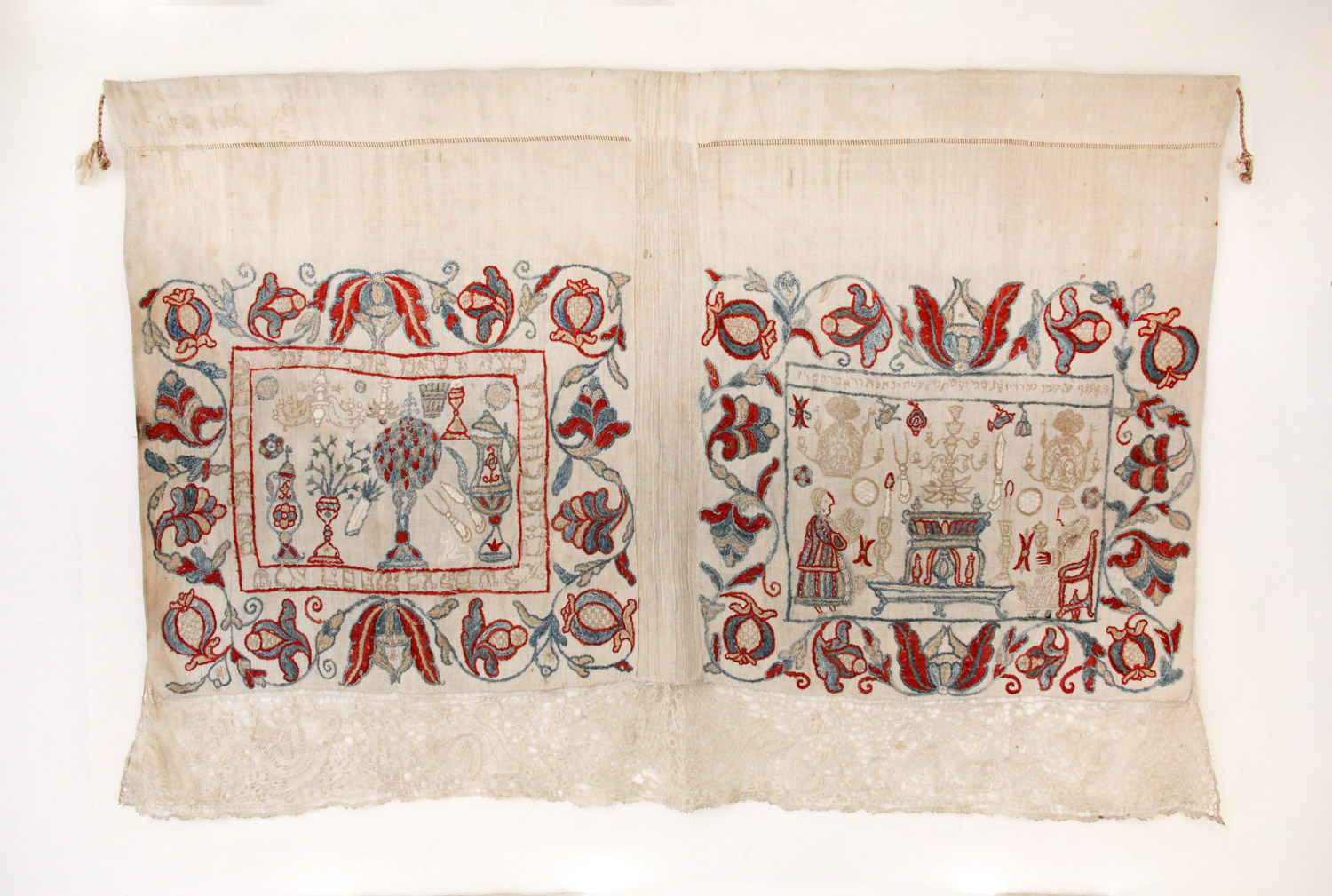2. Hall - 5. view
Cover for Seder Plate
In Jewish ritual tradition, bread – the braided bread eaten on the Shabbat and on holidays called challa, as well as the unleavened bread eaten on Passover called matzah – has to be covered until its blessing is recited. This cover for the Seder plate is made out of linen, and is stem- and flat-embroidered with red, blue and beige silk thread. It is a nice example of cultural exchange and influence. It consists of two separate pieces, which were sewn together at a later date. On the piece on the right hand side, there is a scene from the Seder night, and on the left hand side, there are symbolic objects of the festive meal. The inscription above the picture on the right names the owners of the textile: Yoel Samuel and his wife, Yakhet. On the picture on the right hand side of the textile, the head of the family is sitting at the head of the table with a goblet of wine in his hand; he wears the kittel, a white robe used as burial shroud by Jewish men, which is traditionally worn on the Seder as well. His wife is standing, and from her hand motion it is obvious that she is just lighting the festival candles. On the table, there is a tiered Seder plate. Above the table hangs a Judenstern, a brass lamp in the form of a six-pointed star, which was traditionally used in Jewish households. There are two more lights on the wall in the picture. The pictures on both sides of the textile are framed in a domestic embroidered garland with pomegranates and tulips.
This type of embroidery became widespread in the seventeenth century, during the Turkish occupation of Hungary, first in noble mansions, and later on also in simple households. This cover for the Seder plate with the picture of the Seder and the garland with pomegranates and tulips dates probably from the early eighteenth century.
